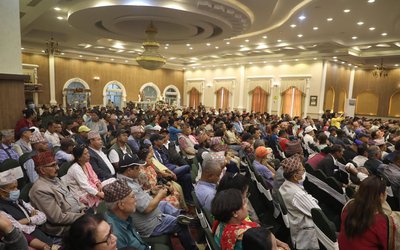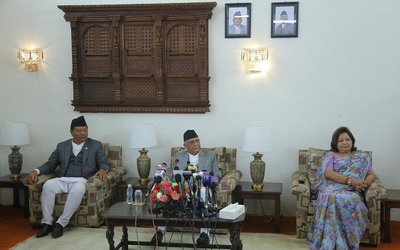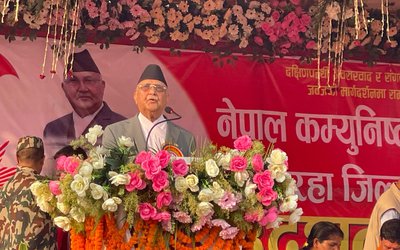The world is marking December 11 as International Mountain Day after the United Nations General Assembly designated the day for the development of mountains and high lands across the globe. Marking the day in Nepal, a home to eight Himalayas out of 14 mountains above 8000 meters in the world in addition to others highlands, has a great significance at a time when melting mountains are seizing headlines across the world.
We are marking this special day while the United Nations Framework for Convention on Climate Change (UNFCCC) Conference of Parties (COP-21) is underway in Paris since December 1. With the snow-capped mountains continue to melt, people residing around this high lands are facing adverse impacts in their livelihood. We are already seeing the effects of extreme weather, snowstorms, avalanches on the Mt. Everest and blizzards in famous Annapurna Trekking circle, a mountainous country needs to raise voice about the consequences of climate change to protect and promote the rights of mountain communities in Nepal. Recently, a study conducted by Chinese Academy of Science and University of Hunan Science and Technology revealed that The glacial lakes of Mount Everest are melting as the temperature of the Everest is getting warmer in the past 50 years.
According to ICIMOD, Mountains cover around 25% of the earth’s land surface and host about 13% of the world population and are perennial providers of essential ecosystem goods and services to billions of people living in the mountains and downstream. Mountain region is rich in Timber, medicinal and aromatic herbs, and it could have generated substantial incomes to the local people. Those resources, however, continue to remain underused or untapped for centuries due to the lack of development infrastructures, and governments’ sheer negligence.
Around 77% of Nepalese land is recognized as high hills and mountains with fragile mountain ecology but rich bio-diversity and natural resources. In its most recent report entitled “Climate Change Vulnerability Index 2011” Maplecraft has ranked Nepal as the fourth-most vulnerable to the impact of climate change over the next 30 years while its own emissions make up less than 0.1% of global emissions. Mountain Communities are more at risk from the negative consequences of Climate Change and the least equipped to with stand and adapt to it.
They are likely to suffer further if the stakeholders fail to adopt adequate measures to address their woes caused by climate change. Food security of mountain communities is directly linked to incomes generated from livestock production, agriculture, forestry and tourism. The growing food deficit condition caused by new patterns of pests and diseases, lesser availability of water for irrigation particularly during non-monsoon seasons adversely effects on the winter crop production where people are already in the surge of price hikes.
So, it is important to focus attention on these areas for sustainable development of those communities. Solutions must be developed and urgent action need to be taken to address climate change in Nepal’s mountain areas to ensure effective support the communities in adapting to these changes.
Hence, it is important to address the challenges faced by mountainous communities in a sustainable manner. Sustainable approaches for livestock production, agriculture, forestry, tourism and micro hydropower need to be adequately implemented to enhance the food security in mountain areas of Nepal.
The representatives from mountainous Least Developed Countries need to raise a common voice for the mountains and the need for an equitable share of global climate funds to be allocated to address the impacts to climate change and support adaptation in the mountains of least developing countries.
Pandey is an Advocacy and Knowledge Management Coordinator KIRDARC Nepal
















